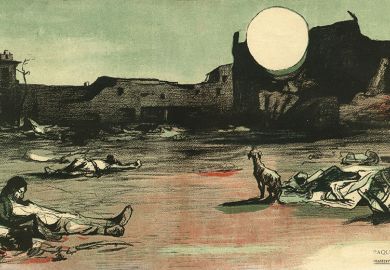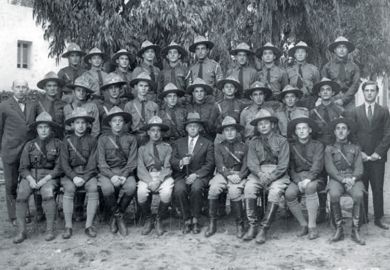On 6 June 2001, at Christie’s auction house in London, an attempt was made by the Board of Deputies of British Jews to sell a hitherto unpublished work by the 19th-century explorer and writer Sir Richard Burton (1821-90). The reserve price of £150,000 was not reached, and the lot – one of a handful of Burton manuscripts still in private hands – was therefore withdrawn and returned to the board, which had purchased it some 92 years previously.
The irresponsible attempted sale of this manuscript aroused worldwide controversy, not least because American Nazis apparently bid for the work, with the intention of publishing it. Entitled “Human Sacrifice among the Sephardine or Eastern Jews”, the manuscript purported to lend credence to the centuries-old calumny that Jews murdered Christians and used their blood for ritual purposes: the blood libel. Burton – an Oxford-educated swashbuckling hero, translator of the Kama Sutra – actually believed this nonsense and had apparently sought to convert others to his view.
This incident is not mentioned by Magda Teter in her magisterial account of the blood libel and its origins. But she does remind us of an event just as shocking that took place in Lincoln in May 2015, when a contingent of adherents of the neo-Nazi “British Movement” presented itself at the cathedral with the intention of honouring “Little Hugh of Lincoln”, a nine-year-old boy whose death in 1255 had been blamed on the Jews. Confronted by a cathedral official who informed them that Hugh had never been canonised and was therefore not a saint, the contingent remained unfazed and left offerings of flowers, insisting that the story of Hugh’s murder by Jews lusting for his blood must be true, because the medieval chronicler Matthew Paris had said so.
Teter’s research centres less on the origins of the blood libel than on an incident in the Italian Alpine city of Trent in 1475. A Christian lad called Simon was found murdered. Local Jews were blamed and 15 of them were sentenced to death and burned alive. A cult – the Cult of Little Simon – was born and thrived, thanks in part to the machinations of Johannes Hinderbach, the local prince-bishop. Pilgrims flocked to Trent to worship at Simon’s tomb; miracles naturally followed. This was clearly very good news for the regional economy. Like Hugh of Lincoln, Simon of Trent was never canonised, yet it was not until 1965 that a Pope – Paul VI – formally removed his name from the Roman Martyrology.
But popular myth is not so easily undermined. On 27 April 2019, a gunman fired into a synagogue in Poway, California (near San Diego), killing one worshipper and wounding others. “You are not forgotten, Simon of Trent,” he had reportedly explained in his online manifesto.
Jews are forbidden to consume blood. As Reformation scholars were quick to point out, this prohibition alone throws doubt on the veracity of the blood libel, which seems to have originated (but why?) in Norwich in 1144. That it flourished nonetheless (and Teter is surely right to point this out) is due to the downright cynicism of successive pontiffs, who knew the truth but were for centuries unwilling to say so.
Geoffrey Alderman is principal of Nelson College, London.
Blood Libel: On the Trail of an Antisemitic Myth
By Magda Teter
Harvard University Press
568pp, £31.95
ISBN 9780674240933
Published 31 January 2020
POSTSCRIPT:
Print headline: Nonsense and hidden truths
Register to continue
Why register?
- Registration is free and only takes a moment
- Once registered, you can read 3 articles a month
- Sign up for our newsletter
Subscribe
Or subscribe for unlimited access to:
- Unlimited access to news, views, insights & reviews
- Digital editions
- Digital access to THE’s university and college rankings analysis
Already registered or a current subscriber?








